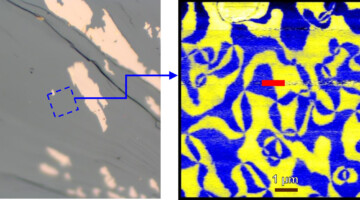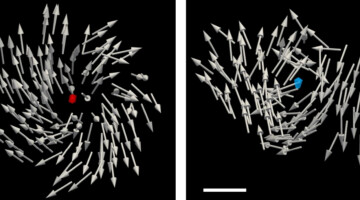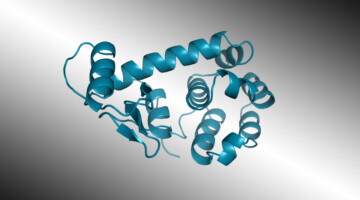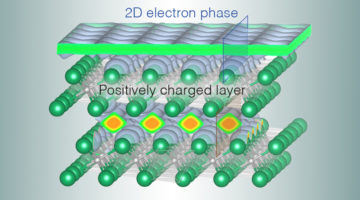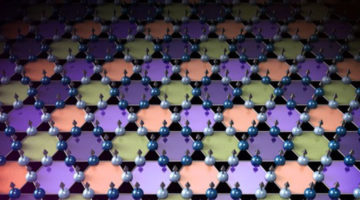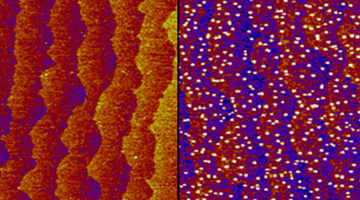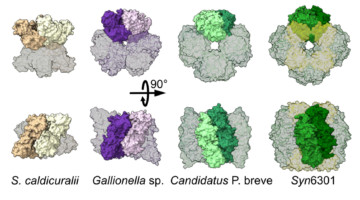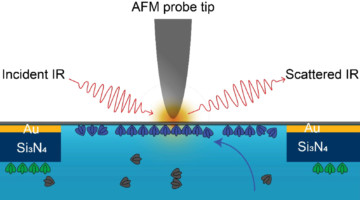Researchers used infrared light to investigate the properties of the domain walls that separate electrically polarized (ferroelectric) regions in a rare-earth ferrite material. An understanding of domain-wall behavior is relevant to the development of advanced logic and memory applications for ultralow-power digital devices. Read more »![]()
![]()
Science Highlights
Imaging Topological Magnetic Monopoles in 3D
Researchers created topologically stable magnetic monopoles and imaged them in 3D with unprecedented spatial resolution using a technique developed at the ALS. The work enables the study of magnetic monopole behavior for both fundamental interest and potential use in information storage and transport applications. Read more »![]()
![]()
Chatbot-Style AI Designs Novel Functional Protein
Researchers used an artificial intelligence (AI) algorithm, similar to those used in natural-language (“chatbot”) models, to design a functional protein that was then structurally validated at the ALS. The work could speed the development of novel proteins for almost anything from therapeutics to degrading plastic. Read more »![]()
![]()
Shaping X-Ray Mirrors Using Machine Learning
Researchers used machine learning to predict and control the shape of an x-ray mirror’s surface with exquisite accuracy and precision. The work represents a key step toward mirrors that can fully exploit the x-rays from upgraded, state-of-the-art light sources and could also enable the engineering of x-ray beams with novel characteristics. Read more »![]()
![]()
A 2D Electron Liquid Floats on a Crystal Surface
Researchers discovered a liquid-like layer of electrons that floats on the surface of an unusual crystal and appears to undergo a phase transition upon doping. The system is an ideal platform for studying exotic phenomena involving electrons (e.g. superconductivity) without complications arising from other types of interactions. Read more »![]()
![]()
Charge Density Wave Found in Magnetic Kagome Crystal
Researchers discovered a wave-like charge order in a magnetic material with a “kagome” geometric structure and obtained clues to the order’s origins in the material’s electronic structure. By helping to connect certain structures with emergent quantum properties, the work brings us a step closer to the goal of creating materials by design. Read more »![]()
![]()
First Direct Measurement of Elusive Donnan Potential
Researchers performed the first direct measurement of the Donnan electrical potential, which arises from an imbalance of charges at membrane-solution interfaces. Considered unmeasurable for over a century, the Donnan potential is relevant to a wide range of fields, from cell biology to energy storage and water desalination. Read more »![]()
![]()
Watching Nanoparticle Chemistry and Structure Evolve
Using a multimodal approach, researchers learned how chemical properties correlate with structural changes during nanoparticle growth. The work will enable a greater understanding of the mechanisms affecting the durability of nanoparticles used to catalyze a broad range of chemical reactions, including clean-energy reactions. Read more »![]()
![]()
Protein Assemblies Show Surprising Variability
Protein-structure studies performed in part at the ALS helped researchers discover that the protein assemblies in a key carbon-cycling enzyme can rearrange with surprising ease. The findings raise the prospect of genetically tuning the protein in agricultural plant species to produce more productive and resource-efficient crops. Read more »![]()
![]()
A Nano-IR Probe for Proteins in Liquid Environments
A new technique using infrared (IR) light revealed how the self-assembly of proteins is affected by environmental conditions in a surrounding liquid. This nanoscale probe of soft matter in a liquid matrix will facilitate advances in biology, plastics processing, and energy-relevant applications such as electrocatalysts and batteries. Read more »![]()
![]()
- « Previous Page
- 1
- …
- 4
- 5
- 6
- 7
- 8
- …
- 27
- Next Page »
